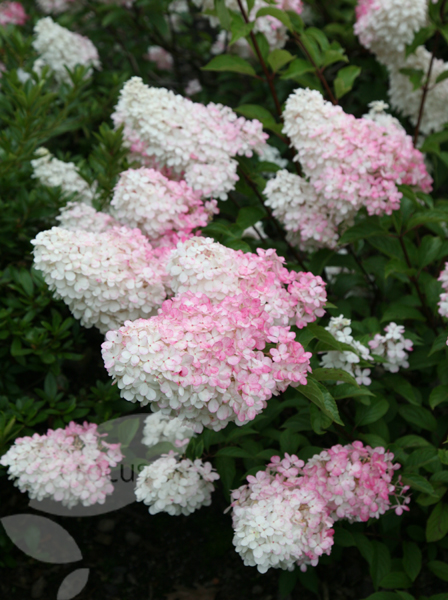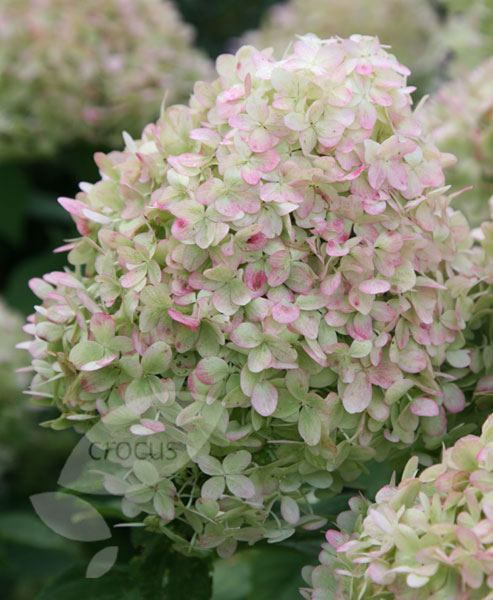
Hydrangea (/ha?'dre?nd?i?/;common titles hydrangea or hortensia) is a genus of 70-75 types of flowering plant life local to southern and eastern Asia (China, Japan, Korea, the Himalayas, and Indonesia) and the Americas. Probably the greatest kinds diversity is at eastern Asia, notably China, Japan, and Korea. Most are shrubs 1 to 3 meters extra tall, but some are small trees and shrubs, and more lianas achieving up to 30 m (98 ft) by climbing up trees. They can be either deciduous or evergreen, though the cultivated temperate types are deciduous broadly.Having been introduced to the Azores, H. macrophylla is very common now, particularly on Faial, which is recognized as the "blue island" because of the vast number of hydrangeas present on the island.Life cycleHydrangea bouquets are created from planting season to late fall months; they develop in flowerheads (corymbs or panicles) frequently at the ends of the stems.

Typically the flowerheads contain two types of bouquets: small non-showy blooms in the center or interior of the flowerhead, and large, showy blooms with large bright colored sepals (tepals). These showy bouquets are prolonged in a diamond ring often, or to the exterior of the small flowers. Vegetation in untamed populations routinely have few to none of them of the showy bouquets, while cultivated hydrangeas have been preferred and bred to have more of the larger type blooms.There are two flower arrangements in hydrangeas with Corymb style inflorescens, which include the commonly grown "bigleaf hydrangea"--Hydrangea macrophylla. Mophead blossoms are large rounded flowerheads resembling pom-poms or, as the name means, the brain of an mop. On the other hand, lacecap flowers bear round, flat flowerheads with a center core of subdued, small blossoms surrounded by outer wedding rings of much larger blooms having showy tepals or sepals.
The blossoms of some viburnums and rhododendrons can show up, initially, a lot like those of some hydrangeas.Colors and soil acidityIn most varieties the plants are white, however in some kinds (notably H. macrophylla), can be blue, red, red, light crimson, or dark purple. In these species the color is afflicted by the occurrence of metal ions which are available or tangled up depending upon the garden soil pH. For H. h and macrophylla. serrata cultivars, the flower color can be determined by the relative acidity of the soil: an acidic soil (pH below 7), will supply aluminum ions and produce flowers that are blue to purple typically, whereas an alkaline soil (pH above 7) will tie up aluminum ions and bring about pink or red flowers.
This is the effect of a color change of the rose pigments in the presence of aluminium ions which can be taken up into hyperaccumulating vegetation.[6] Bringing down the pH of potting soils or mixes usually will not change the flower color to blue, because these soils have no aluminum ions. The capability to blue or green a hydrangea is affected by the cultivar also. Some plants are selected because of their ability to be blued, while some are bred and selected to be red, pink or white. The flower color of all other Hydrangea species is not influenced by aluminum and can't be changed or shifted. Hydrangeas also have a nickname called 'Change Rose'.
Hydrangea macrophylla for sale Seeds or Plants to Buy Click here
Buy hydrangea Hydrangea paniculata 39;Bombshell PBR39;

ARE HYDRANGEAS THE FLOWERS FOR YOU? Order directly from growers, SAVE
Buy hydrangea Hydrangea paniculata 39;Limelight PBR39;: Delivery by

Tidak ada komentar:
Posting Komentar